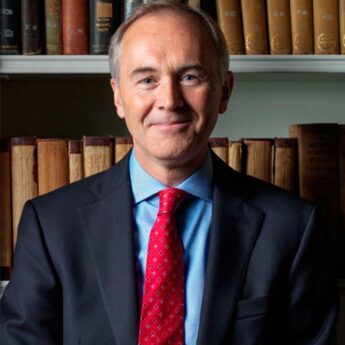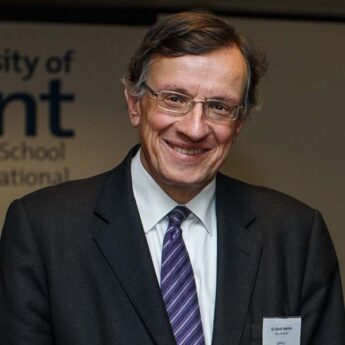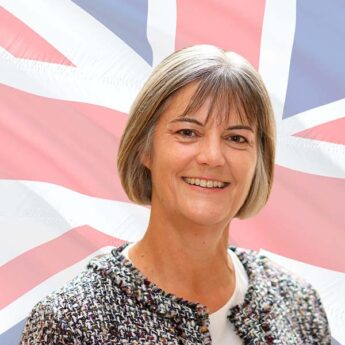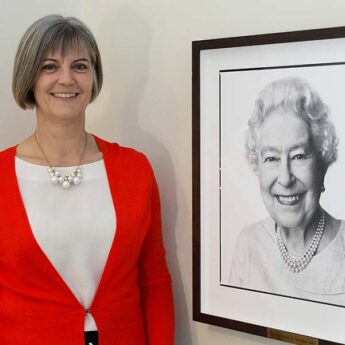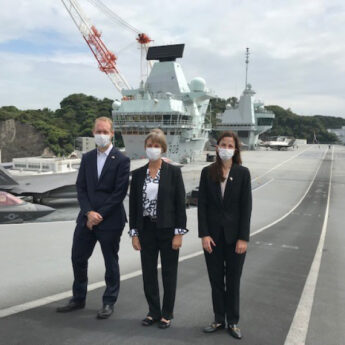Alack of fundamental understanding and the capacity to accurately measure small amounts of radioactive components are at the heart of people’s fears concerning nuclear energy. This was an observation made by Dr Keith Franklin of the UK’s National Nuclear Laboratory (NNL) during a presentation made to BCCJ members at the ambassador’s residence in the British Embassy Tokyo compound on 22 November.
In a wide-ranging talk entitled “Nuclear: Old and New”, Franklin discussed the history, organisation and facilities of the NNL, as well as some of the products it has developed.
In addition, he introduced new nuclear facility designs currently undergoing approval in Britain, as well as examples of the decommissioning of older plants.
The NNL is a government-owned, commercially operated nuclear-services provider, covering the entire gamut of the nuclear fuel cycle, from fuel manufacture to waste disposal.
Although only officially formed in 2008, Franklin says the enterprise’s history almost follows that of the UK nuclear industry, having its roots in the now defunct British Nuclear Fuels Ltd. (BNFL), a firm established by the government in 1971 and where Franklin started his career in 1996.
The NNL’s present activities have changed greatly since its inception, he said. “When we were part of the BNFL, our job was to support the BNFL’s process, but now we are actually looking outside to see what other areas we can go into”.
One example of this is the NNL’s development of so-called space batteries— power packs used during long-term space missions.

In 2011, the lab was awarded a £1mn contract by the European Space Agency to research the feasibility of using the radionuclide americium—most commonly used in smoke alarms—to power batteries for future European space missions.
Another successful product of NNL research is the recently released RadBall— a plastic ball that changes colour when exposed to radiation.
If left in a contaminated area for a period of time, the RadBall can track radiation, with colour change intensities indicating differing degrees of contamination and its exact whereabouts, he said.
“It gives you a 3-D picture of where the contamination lies, meaning you then know the exact areas that need cleaning up, rather than just going in and cleaning up the entire site,” Franklin explained.
In addition, the NNL is one of a number of organisations providing technical support to the UK’s Office of Nuclear Regulation (ONR) in its approval process for a new fleet of nuclear power stations in Britain.
Two designs are under consideration at a time when public opinion on nuclear power in the UK has shifted.
According to a MORI poll conducted in late 2010, 40% of Britons had a favourable opinion of the nuclear industry and nuclear energy, compared with 17% who had an unfavourable view. In a follow-up poll in June 2011, those figures were 28% and 24%, respectively. The changes were probably influenced by the 11 March nuclear disaster in Fukushima, according to Franklin.
Interestingly, in the same poll, 68% of respondents agreed that “Britain needs a mix of energy sources to ensure a reliable source of electricity, including nuclear power and renewables”—down just 1% from the pre-Fukushima poll, he pointed out.
“It is important to see nuclear energy in the context of climate change and energy security”, said Franklin, who lived in Japan from 1999 to 2001, when on secondment to the Japan Atomic Energy Agency in Ibaraki Prefecture. “Nuclear, along with renewables such as wind, solar and tidal power, does not emit CO2 gas”.
However, alternative energy sources such as wind and solar require significantly larger areas of land to produce the same power output as one nuclear or fossil fuel power station, he added. “A balance of generation sources, including renewables, with nuclear providing the underlying ‘baseload’, would be the preferred energy mix”, commented Franklin, who is on a short secondment to the embassy.
There seems to be an “understandable fear” of radiation that is brought about by the ability to detect even the smallest quantities of radioactive materials, he added.
“Risks related to radiation need to be seen in the same context as those in other industries. A very small amount of radioactive material can be detected, compared to larger amounts of other substances, which may also be harmful at certain levels.
“This can add to the fears and misunderstandings. At what point does the level of contamination reach the level of risk we take from breathing in exhaust fumes from a walk down the street, for instance?”
Franklin insisted that what happened at Fukushima’s Daiichi Nuclear Power Plant in March was “not good” for the industry, and that lessons need to be learned. But that did not change the basic need for a reliable future source of energy.
“Energy is something that we all use on a daily basis, and there needs to be an understanding that there is a price to pay and risks to be taken no matter what our energy sources are. The arithmetic needs to be understood by the general public and renewable energy sources will all play their part in the mix. However, the needs of society demand that we look at something that can provide a reliable baseload going forward”.

